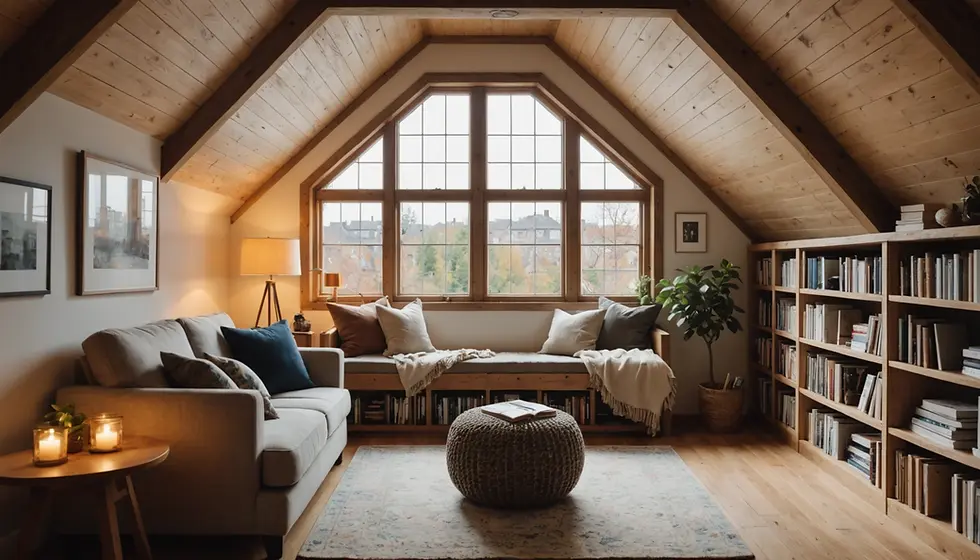Uncovering the Untapped Potential: Exploring Innovative Sustainable Materials for Modern Custom Homes
- PGD Homes

- Feb 19
- 4 min read
In recent years, sustainability has transformed from a buzzword into a vital aspect of many industries, including architecture and home building. More homeowners are now eager to create homes that are not only beautiful but also environmentally responsible. This post will explore innovative sustainable materials that are reshaping custom homes, blending aesthetics with eco-friendliness, and cornering the market on modern living.
The Importance of Sustainability in Home Building
In today’s world, sustainability in home construction is no longer just a trend; it’s becoming a necessity. Climate change and resource depletion are pressing issues. Many builders and homeowners are realizing the benefits of using eco-friendly materials. Choosing sustainable materials can significantly reduce a home's carbon footprint, lower energy consumption, and promote a healthier living environment.
For instance, homes built with sustainable materials can reduce energy costs by 30% to 50%, depending on the materials and design. This heightened awareness has resulted in exciting innovations in material science, providing options that elevate home functionality while being gentle on the planet. Let’s take a closer look at some of the most promising sustainable materials available today.
Bamboo: The Versatile Green Wonder
Bamboo is frequently celebrated as one of the most sustainable building materials available. It can grow up to three feet in a single day and can be harvested in just three to five years, compared to the decades it takes for traditional timber.
Not only is bamboo strong and lightweight, but it also naturally resists pests and moisture, reducing the need for chemical treatments. This makes it an excellent option for flooring, cabinetry, and structural elements. For example, using bamboo for flooring can cut down on the need for extensive treatments and reinforce a home’s eco-friendly goals.

Beyond its durability, bamboo provides a unique aesthetic that enhances modern custom homes, blending elegance with sustainability effortlessly.
Recycled Steel: Strength Meets Sustainability
Recycled steel is becoming a popular choice as a sustainable alternative to traditional steel. By sourcing steel reclaimed from old buildings, manufacturers can cut down on the energy and resources needed to create new materials.
This approach diverts about 7 million tons of steel from landfills each year in the U.S. alone, while also delivering high strength-to-weight ratios. This makes recycled steel ideal for structural framing and roofing.
Additionally, its resistance to corrosion and pests ensures durability, reducing the need for maintenance. As many contemporary homes embrace open spaces and high ceilings, the benefits of using recycled steel have never been more evident.
Rammed Earth: Embracing Natural Materials
Rammed earth construction may be an ancient technique, but it is enjoying a renaissance in modern design. This method consists of compacting soil into forms to create robust walls that are visually captivating and environmentally friendly.
Homes built with rammed earth enjoy exceptional thermal mass, helping maintain comfortable indoor temperatures and reducing reliance on heating and cooling systems. This results in energy savings of up to 30%.
Moreover, utilizing local soil can dramatically decrease transportation emissions, making rammed earth a genuinely local and sustainable construction method. For homeowners looking for character, the earthy tones and textures of rammed earth are undeniably attractive.
Sustainable Insulation: Beyond Conventional Materials
Insulation plays a crucial role in enhancing energy efficiency, but standard materials often have detrimental environmental impacts.
Sustainable alternatives like sheep's wool, cellulose, and hemp insulation are stepping up to fill this gap. Sheep's wool provides natural insulation and moisture management, while cellulose, made from recycled paper, exhibits excellent thermal performance.
Hemp insulation stands out as well, being biodegradable and sequestering carbon during its growth. Using sustainable insulation not only boosts energy efficiency but also fosters healthier indoor environments.
Reclaimed Wood: A Story in Every Beam
Reclaimed wood is a favorite among custom home builders for its unique aesthetic charm and rich history. Sourced from old barns, warehouses, or other structures, reclaimed wood satisfies the demand for new lumber while reducing deforestation.
The captivating narratives told through its unique textures and colors create spaces that are anything but ordinary. Incorporating reclaimed wood as beams, flooring, or accent walls allows homeowners to celebrate sustainability while expressing their individuality.

The carbon footprint associated with reclaiming and reusing wood is noticeably less than that of sourcing new wood, making it a wise choice for eco-conscious homeowners.
Innovative Glass: Harnessing Natural Light
When considering sustainable materials, glass might not seem like an obvious choice. However, advancements in glass technology have made high-performance glass an excellent eco-friendly option.
This type of glass improves energy efficiency by reflecting heat and managing sunlight, which can significantly trim heating and cooling costs by up to 25%.
High-performance glass also fosters natural light within homes, reducing the need for artificial lighting and cutting down energy consumption substantially. With the push for more natural elements in custom homes, this innovative glass broadens design possibilities while remaining eco-conscious.
Building with Purpose: Towards a Sustainable Future
Modern custom homes stand as testaments to the potential of thoughtful material choices.
With a growing array of options—such as bamboo, recycled steel, rammed earth, and reclaimed wood—homeowners can create living spaces that honor the environment and their personal aesthetics.
By choosing these materials wisely, we can contribute to a future where homes not only serve their occupants well but also benefit the planet.
As we uncover the vast potential of sustainable materials, every small choice can lead to significant impacts. The landscape of modern homes is evolving, offering a brighter future for our living spaces and the environment.
Investing in sustainable living is more than a trend; it's a path towards creating homes that celebrate our planet, ensuring that future generations can enjoy a healthier world.







Comments